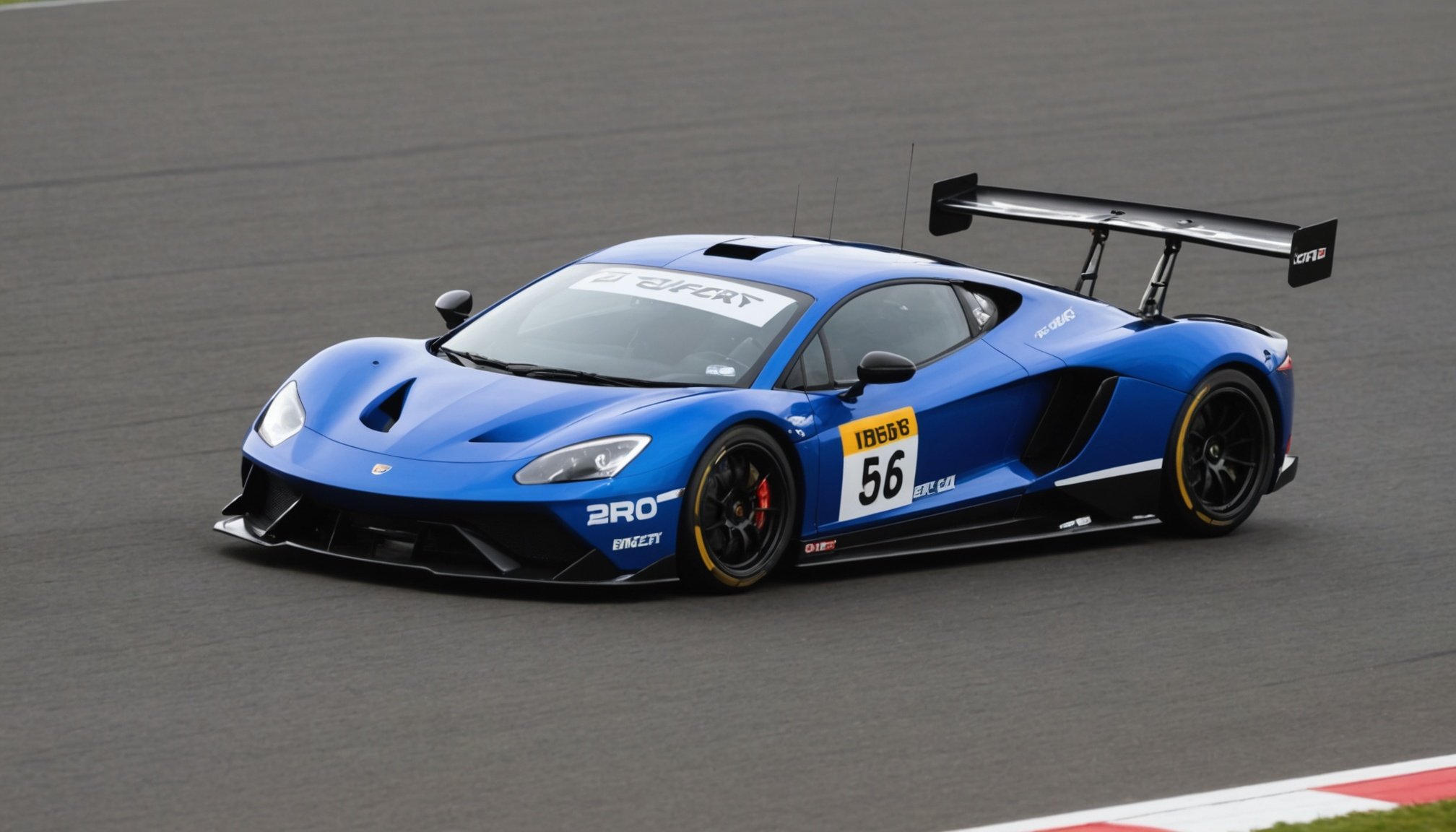Unlocking Peak Track Performance: Expert Tips to Adjust Gear Ratios in British Racing Cars
Understanding the Importance of Gear Ratios in Racing
When it comes to optimizing the performance of a British racing car, few aspects are as crucial as the gear ratios. These ratios determine how power is delivered to the wheels, affecting everything from acceleration and top speed to handling and overall driver experience. In the high-stakes world of motorsport, where milliseconds can separate victory from defeat, getting the gear ratios just right is a game-changer.
To illustrate this, consider the world of Formula 1, where teams like those in F1 use advanced technologies such as digital twins to simulate and optimize their car’s performance, including gear ratios. These simulations allow teams to explore the behavior of every component without the physical car ever leaving the garage, ensuring that every gear shift is perfectly timed for maximum performance[1].
In the same genre : Boosting Performance: Enhance Your UK Family Hatchback”s Air Intake System for Maximum Efficiency
The Basics of Gear Ratios
Before diving into the adjustments, it’s essential to understand the basics of gear ratios. A gear ratio is the relationship between the rotational speed of the input and output shafts in a transmission. In simpler terms, it determines how many times the engine crankshaft turns relative to the wheels turning.
Here’s a detailed breakdown of what you need to know:
- Final Drive Ratio: This is the ratio between the transmission output and the wheels. A lower final drive ratio (e.g., 3.5:1) means the car will have a higher top speed but slower acceleration, while a higher ratio (e.g., 4.5:1) results in quicker acceleration but a lower top speed.
- Gear Spread: This refers to the difference between the highest and lowest gear ratios. A wider gear spread allows for better performance across various driving conditions but can make the car more difficult to drive smoothly.
- Gear Progression: This is how the ratios change from one gear to the next. A well-designed gear progression ensures smooth power delivery and optimal performance.
Adjusting Gear Ratios for Different Tracks
The key to unlocking peak performance is to tailor your gear ratios to the specific track you’re racing on. Here are some tips for different types of tracks:
Circuit Tracks
For circuit tracks, which often feature a mix of high-speed straights and tight corners, you need a balance between acceleration and top speed.
- Use a closer gear spread to ensure smooth power delivery through the gears.
- Optimize the final drive ratio based on the track’s layout. For example, a track with long straights might benefit from a lower final drive ratio, while a track with many corners might require a higher ratio.
- Consider the engine’s power band. If your engine produces a lot of torque at lower RPMs, you may want to use shorter gear ratios to keep the engine in its power band.
Rally and Gravel Tracks
For rally and gravel tracks, the focus shifts to traction and control.
- Use a wider gear spread to handle the varying conditions from slow corners to high-speed sections.
- Select gear ratios that keep the engine in its optimal power band, even on uneven terrain.
- Adjust the differential settings to improve traction and stability on loose surfaces.
Practical Tips for Adjusting Gear Ratios
Here are some practical tips to help you adjust your gear ratios effectively:
Data Analysis
- Use data logging tools to analyze your car’s performance on the track. This data can help you identify which gears are being used most frequently and where adjustments can be made.
- Consult with experienced mechanics or engineers who have worked on similar cars and tracks.
Simulation and Testing
- Utilize digital twins or simulation software to test different gear ratio configurations without the need for physical testing.
- Conduct track tests with different gear ratio setups to feel the differences firsthand.
Driver Feedback
- Work closely with your driver to get feedback on how the car feels. Drivers often have a keen sense of what works and what doesn’t.
- Make incremental changes and test them one by one to avoid confusing variables.
Example Adjustments for British Racing Cars
Let’s take a look at how these principles might apply to some iconic British racing cars:
Aston Martin Valkyrie
The Aston Martin Valkyrie, with its 1139bhp engine, is a prime example of a car that requires precise gear ratio adjustments. Given its high power output and the need for both speed and control, the Valkyrie’s gear ratios are optimized for a mix of high-speed circuits and technical corners.
- Final Drive Ratio: A lower final drive ratio might be used for high-speed tracks like Silverstone, while a higher ratio could be better suited for more technical tracks.
- Gear Progression: The Valkyrie’s gear progression is designed to keep the engine in its optimal power band, ensuring that the driver can extract maximum performance without struggling with gear changes[5].
Lotus Elise
For a lighter and more agile car like the Lotus Elise, the focus is on maintaining a close gear spread to ensure smooth power delivery.
- Gear Ratios: The Elise benefits from shorter gear ratios to keep the engine revving within its power band, especially in tight corners.
- Final Drive Ratio: A higher final drive ratio can help the Elise accelerate quickly out of corners, making it ideal for tracks with many turns.
Table: Comparing Gear Ratios for Different British Racing Cars
Here is a comparative table to illustrate how different British racing cars might have their gear ratios adjusted:
| Car Model | Final Drive Ratio | Gear Spread | Gear Progression |
|---|---|---|---|
| Aston Martin Valkyrie | 3.5:1 – 4.5:1 | Wide | Optimized for high-speed and technical corners |
| Lotus Elise | 4.2:1 – 5.0:1 | Close | Shorter ratios for tight corners and smooth power delivery |
| McLaren 720S | 3.2:1 – 4.2:1 | Balanced | Designed for both high-speed straights and technical sections |
| Jaguar XE SV Project 8 | 3.8:1 – 4.8:1 | Wide | Adjusted for track and road use, emphasizing traction and control |
Quotes from Experts
Here are some insights from experts in the field:
- “The key to optimizing gear ratios is understanding the specific demands of the track and the characteristics of your engine. It’s not just about the numbers; it’s about how the car feels and performs in real-world conditions.” – Richard Meaden, evo Magazine[5].
- “Digital twins have revolutionized how we approach gear ratio adjustments. We can simulate countless scenarios without ever touching the physical car, ensuring that our adjustments are precise and effective.” – F1 Engineer, Deloitte Insights[1].
Adjusting gear ratios in British racing cars is an art that requires a deep understanding of the car’s mechanics, the track’s layout, and the driver’s feedback. By using advanced tools like digital twins, conducting thorough data analysis, and making incremental adjustments based on real-world testing, you can unlock the full potential of your race car.
Whether you’re racing on the circuits of Silverstone or navigating the gravel tracks of a rally stage, getting your gear ratios right is crucial. Remember, it’s not just about the speed; it’s about the balance, control, and overall driving experience that makes a car truly exceptional.
Additional Tips for Long-Term Performance
For long-term performance and maintenance, here are some additional tips:
- Regularly check and adjust the ride height to ensure optimal gear engagement and performance.
- Monitor the spring rate and adjust it according to the track conditions to maintain the best possible handling.
- Consider the climate and air pollution when adjusting your gear ratios, as these factors can affect engine performance and traction.
- Join a community of racing enthusiasts, such as VIP members or community forums, to share knowledge and learn from others’ experiences.
By following these tips and staying committed to continuous improvement, you can ensure that your British racing car remains at the pinnacle of performance, ready to take on any track that comes its way.











